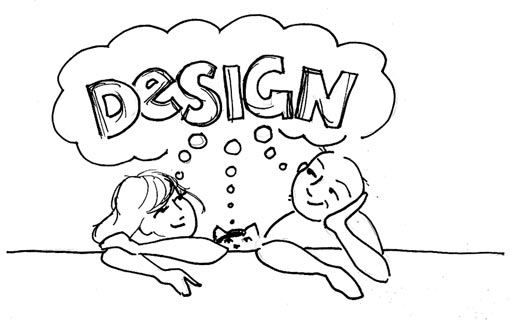3 thoughts for the week of October 11, 2010 (philosophizing on design/designers)
October 12, 2010//Last Updated January 6, 2013

Last week, the 3thought team attended a roundtable presented by AIGA Boston for FutureM called “Design 2014”. The theme was to discuss how we apply the design thinking of tomorrow in today’s world. We left with our brains buzzing and they really haven’t been quiet since.
This week’s 3 thoughts are dedicated to the philosophical discussion of design. What makes a designer? What is design? What is the role of design? Here are some ideas that really resonate with our approach to design.
- Jan Kubasiewicz, Head of Graduate Program in Communication Design at the Dynamic Media Institute, MassArt, explained there is a constant underlying exchange of information between everything. This happens not only with standard media and methods of communication, but also within simple interactions and observations, and much of it is subconscious. Designers need to exercise a heightened awareness of this information current. When they are effective, they are able to influence it and guide it to accomplish their purpose.
- Michael Hendrix, Associate Partner, IDEO, stated that designers use a combination of methods and sensibilities to practice their craft. Methods are skills that can be taught. These include methods of execution such as layout, typography and various types of software. Methods also include conceptual methods such as ideation, research and storytelling. But it is the sensibilities that separates a true graphic designer from a production artist. Designers have sensitivities and intuition that tap into emotion, connotation and all the subtleties of communication. It is these sensibilities that cannot be taught. These are the qualities that are innate in designers and makes them different from other professionals.
- Design Thinking is integral to business. All the members of the panel were clear that the future of design is going to be built with teams. No one person is going to have all the skills necessary to solve all design or business problems. But a designer’s approach to framing, defining and solving problems is applicable and often necessary to finding solutions in all areas of business and across all industries. The leaders of tomorrow need to be able to recognize the talents of diverse disciplines and build the right team on visionaries to guide them forward.
Do these ideas resonate with you and how you want to work with designers? We’d love to hear your thoughts.